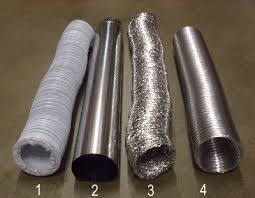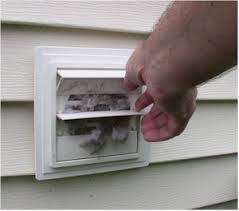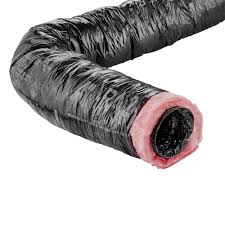Dryer Vents
An Introduction to Dryer Vents
Most Americans do not consider in home laundry as a luxury but rather more of a common element and necessity. Most of us never think about the dangers associated with the basic dryer appliance. Dryers, both gas and electric, require some form of vent that discharges from the home and exits to the exterior of the home.
One of the most important things stressed during any inspection training course is safety. A home inspector is not a code-enforcer, and it is important to distinguish between the two, because there is so much riding on the inspector’s ability to spot trouble areas.
According to the National Fire Protection Agency (NFPA), there are more than 14,000 dryer fires reported. The importance of the system being properly configured, the use of proper materials and the maintenance of the dryer and dryer exhaust systems can hardly be overstated. A well designed exhaust system can allow the dryer to work at peak operating levels.
Dryer Vent Regulations and Inspections
There are very simple rules for the discharge of dryer through a vent pipe. The discharge pipe should evacuate to the exterior of the dwelling in less than 25 feet, and each bend or 90 degree angle in the pipe will shorten that distance by 2 1/2 feet each time. The connection of the various elements of the dryer vents should never be fastened with screws. If a screw is used they can create an opportunity to catch the lint on the interior of the pipe and cause a blockage.

The next and probably the most important element to inspection of the dryer vent should be the identification of the materials being used to exhaust the dryer vent. While home stores and appliance stores may sell a wide variety of pipes and pipe materials, many of these might be dangerous and will contribute to the likelihood of a fire. The common plastic vent is highly susceptible to fire, the combustible plastic material can melt and combust with only a partial blockage or obstruction of lint material.

The foil material, while also very common, is a very lightweight material and can also combust. The lightweight material also causes the material to dip or bend, and these bends can cause obstructions.
Flexible pipes are convenient to install, do not require specific elbow materials, and are different than foil pipes because these are a much thicker material. These are a very acceptable material as long as they are kept clear of debris and properly fastened and installed.
The safest and arguably the best material is smooth rigid metal. This material allows the lint and other elements on the interior of the pipe to easily move to the exit point on the exterior of the home.Just because the proper materials, fastening and length is present; the home is still not out of harm’s way. The interior of the dryer vent will require periodic cleaning, because the lint material is extremely flammable.

When and How to Clean a Dryer Vent
A professional can be called to thoroughly clean the interior of the vent, and insure the system is without build-up. This will lessen the fire risk considerably. Determining if the dryer vent requires cleaning could be as easy as looking at the exterior vent. If it is dirty there, the rest of the pipe will also be dirty.

Most home inspectors and HVAC contractors recommend the vent system be professionally cleaned annually. This is a very simple inexpensive process that should be placed on your annual maintenance list.
There will also be special installation circumstances which will need special attention. These will include vent pipes that exit into or through an attic, and since metal pipes are the recommended materials, this can pose some additional obstacles. In this instance, because the temperatures of the discharge in the pipe is warm; the pipe will be prone to condensation and this condensation could cause water damage to the ceilings below. This is why the pipes in these areas are recommended to be insulated; to prevent condensation.
The attic vent should also never discharge directly into the attic but to the exterior of the home. This can be through the roof or the eaves but it has to be to the exterior. If the vent is broken or torn or just discharges directly into the attic, then lint material can become a fire hazard there as well.

Bottom line, the key is to make sure the dryer vent is clean. While the materials used for the vent is very important, the interior maintenance is the most important part to dryer vent safety.